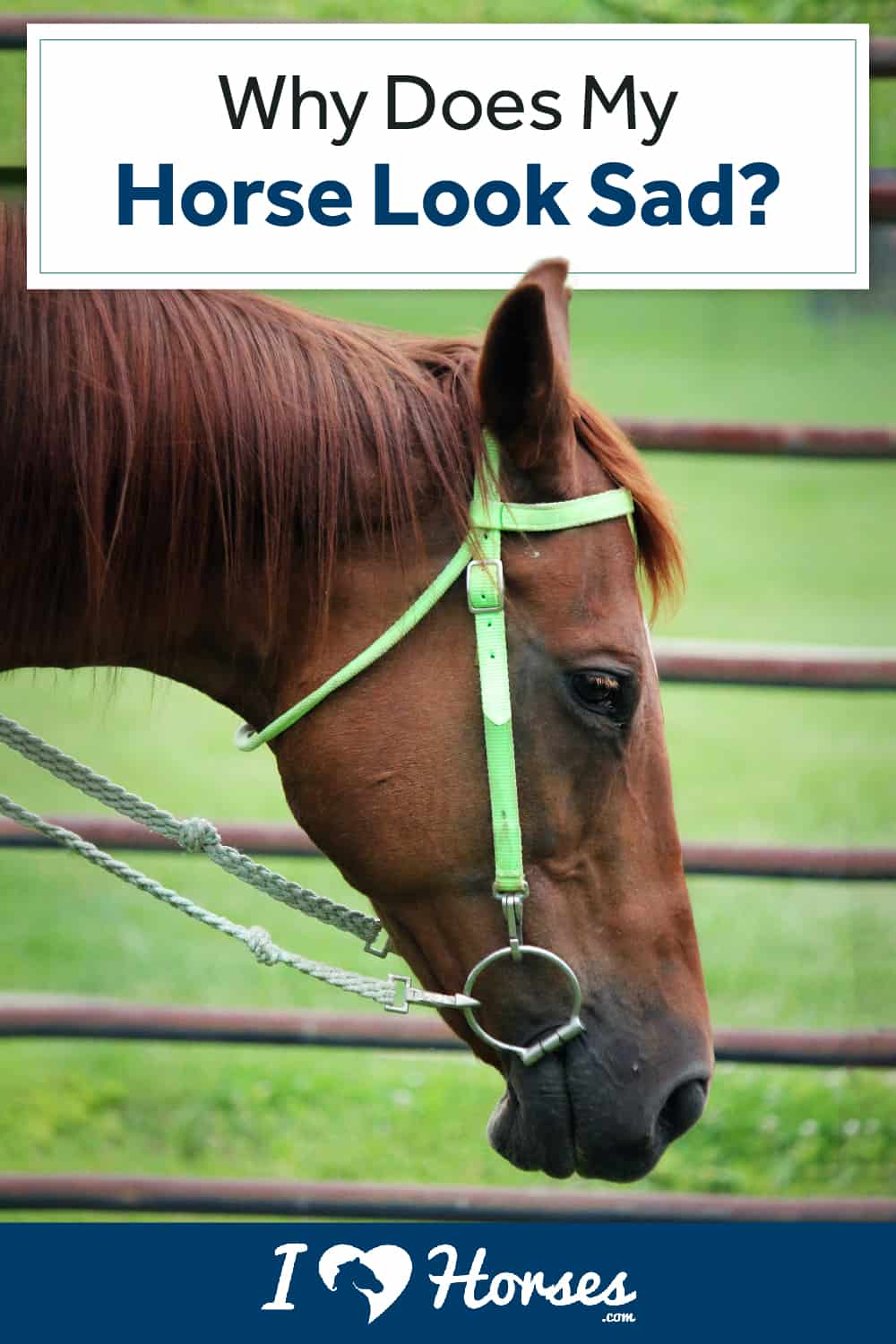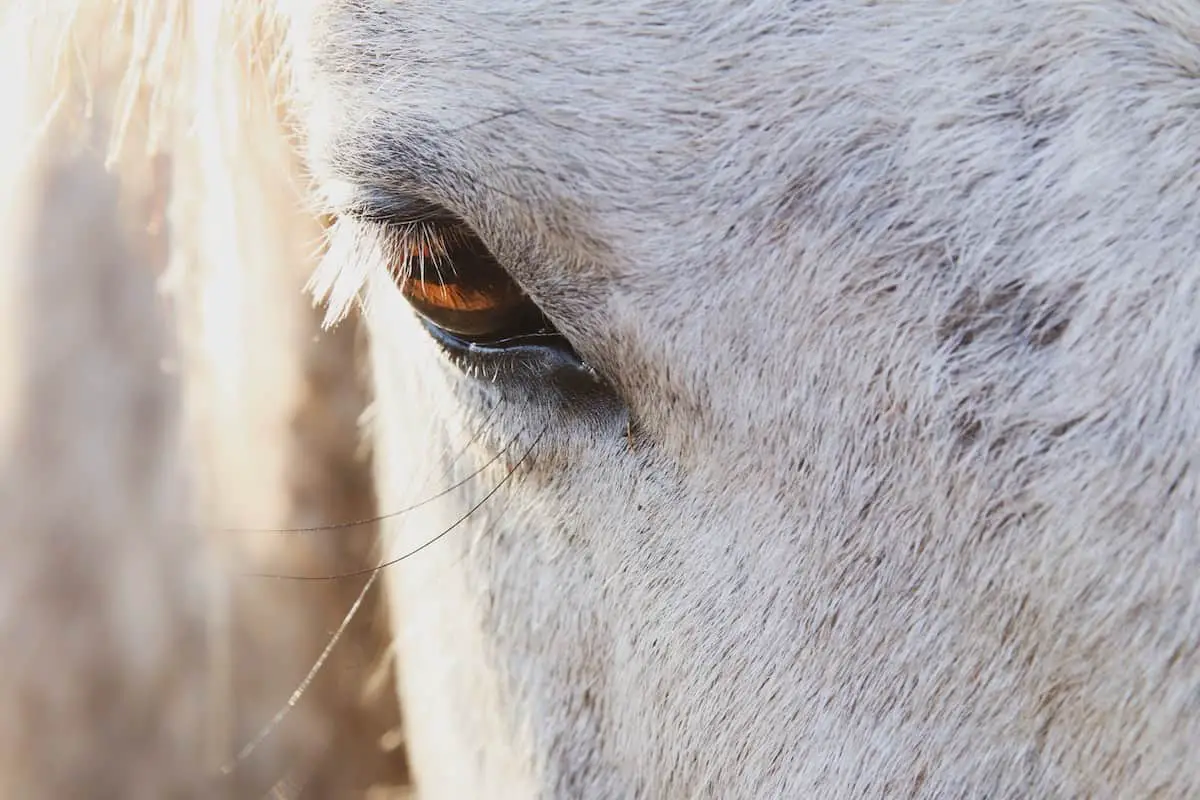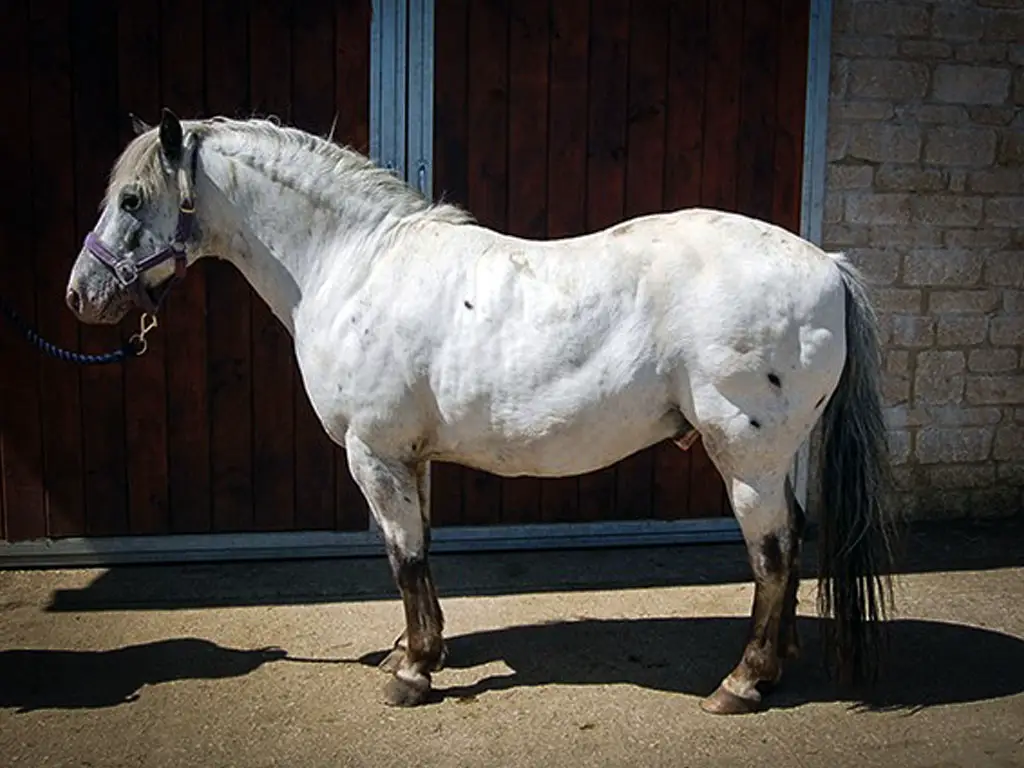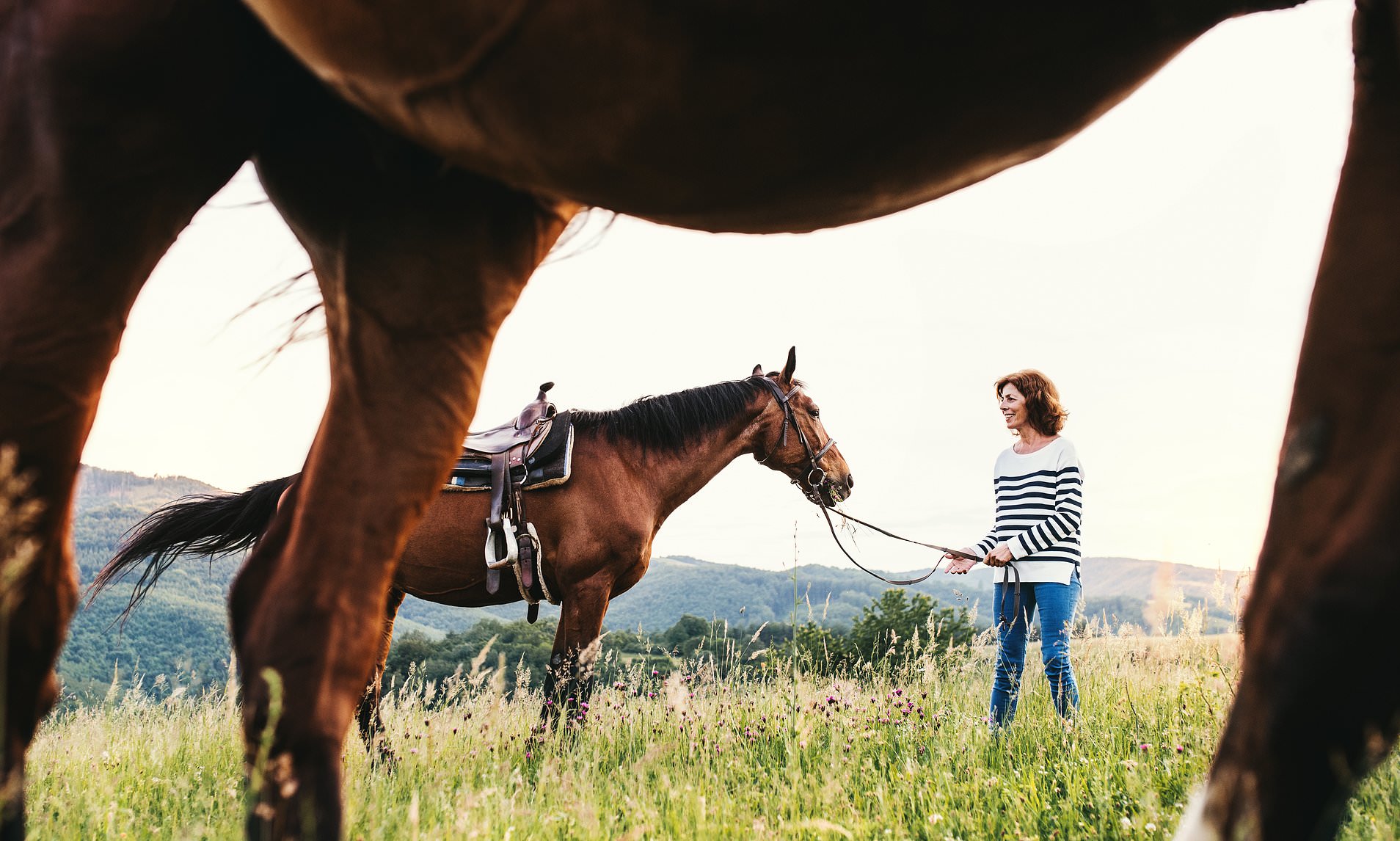When the time comes for a horse owner to make the difficult decision to sell their equine companion, a whirlwind of emotions can be expected. But what about the horse? Do these noble creatures experience a similar emotional journey during such a transition? Understanding the emotional capacity of horses is crucial in addressing this poignant question.
Based on insights from horse owners, experts, and anecdotal evidence, horses do indeed feel a range of emotions, including sadness, when they are sold. Factors influencing their reaction include the depth of their bond with the owner and their adaptability to change. Here are some key takeaways on the topic:
- Horses are known to form strong emotional bonds with their owners and herd mates.
- Their reactions to being sold can range from sadness to confusion and anxiety.
- Owners often experience their own set of emotional stages when selling their horse.
Delving Deeper into Equine Emotional Expressions

Recognizing the complexity of equine emotions requires a nuanced understanding of their behavior. Horses convey their feelings through a variety of subtle behaviors and physical signs that may be misunderstood by the untrained eye. A comprehensive understanding of these emotional displays is vital for anyone involved in equine care and fosters a more profound connection between horses and humans, leading to improved care and enriched interactions.
Interpreting the Subtleties of Equine Communication
Horses express their inner state through a sophisticated range of facial expressions, vocal sounds, and body language. Learning to read these cues is essential for gaining insight into their emotional world. For example, the positioning of a horse’s ears and the expression in its eyes can provide valuable information about its mood. By accurately interpreting these signals, we can meet their emotional needs more effectively.
- Ear positions can reveal a horse’s irritation or anger, or alternatively, relaxation and contentment.
- Eye tension may signal stress, while a soft gaze often indicates trust.
- Behavioral signs such as chomping or licking can be indicative of nervousness or seeking comfort.
Navigating the Social Terrain of Equine Relationships
As social beings, horses thrive within the framework of complex herd dynamics, which also translate into their interactions with humans. Understanding and respecting these social inclinations is crucial for their well-being and can ease transitions such as changes in ownership.
Deciphering Behavioral Influences
The behavior of horses is shaped by a variety of factors. These encompass their previous experiences, inherent temperament, health status, and the consistency of their environment. Recognizing these influences is beneficial for those aiming to cultivate a nurturing relationship with their horse.
- Training background and early life encounters
- Innate characteristics and individual disposition
- Health and overall physical condition
- Stability and features of their living space
Insights into a horse’s history, particularly during their early years, are invaluable for understanding their later responses to different situations. This knowledge contributes to a robust bond with the horse.
Creating a Stable and Enriching Environment
Providing an environment that promotes a horse’s mental well-being is as important as addressing their physical needs. Enrichment that encourages natural behaviors can mitigate stress and prevent boredom. Such activities include interactive toys and opportunities for social engagement with other horses, which help maintain a balanced and contented horse, ready to face life’s changes.
Empowering Horses Through Training and Handling
Trust and confidence are the cornerstones of a healthy human-horse relationship. Training methods that are respectful and consider the horse’s natural communication can result in a positive learning atmosphere. This approach not only strengthens the bond but also prepares horses for the emotional demands of new experiences, including transitioning to new guardians.
With attentive observation and a deep comprehension of equine emotions, we can nurture an empathetic and harmonious relationship with our horses. By focusing on their emotional well-being, we contribute to their happiness and our fulfillment as we engage in the rewarding journey of interspecies companionship.
Addressing Equine Separation Anxiety During Ownership Transitions

As horses face the prospect of new ownership, their experiences are characterized by a variety of emotional responses. Scholarly research supports the existence of equine separation anxiety, highlighting the importance of recognizing and managing these feelings to promote a smoother transition during the sale. This understanding is vital for those involved in the equine industry, from owners to trainers, to ensure the well-being of horses undergoing such significant changes.
Monitoring Signs of Equine Anxiety
It is essential to watch for deviations in a horse’s normal behavior that may indicate distress. Key signs of anxiety to be aware of include:
- Changes in appetite or eating habits, which may fluctuate during periods of stress.
- Uncharacteristic behaviors like pacing or stall walking, reflecting the horse’s unease.
- Physical signs such as changes in coat condition or weight, which can result from prolonged stress.
Recognizing these symptoms allows owners and caretakers to intervene early and provide the necessary support.
Comprehending the Emotional Turmoil of Being Sold
The sale process signifies a profound disruption in a horse’s life. The loss of established relationships and the introduction to unfamiliar settings can intensify feelings of anxiety. Being mindful of these emotional upheavals is essential for those overseeing the transition of horses to new homes.
Evaluating the Emotional Effects of New Surroundings
The horse’s response to new environments is a critical aspect of their emotional adjustment. Important considerations include:
- The level of environmental enrichment and access to outdoor spaces, which can affect a horse’s mood and behavior.
- The introduction to a new routine, which should be done gradually to minimize stress.
- The method of care and handling by the new owner, which should aim to replicate the horse’s previous positive experiences as closely as possible.
Attentive management of these factors is key to supporting the horse’s emotional health during the transition process.
Enhancing Equine Adjustment to New Ownership
To ease the stress of transitioning to a new owner, it is beneficial to:
- Provide the horse with familiar items, such as blankets or toys, to offer comfort during the adjustment period.
- Ensure that the horse has opportunities to establish relationships with new herd mates in a controlled and safe manner.
- Facilitate regular visits or interactions with the new owner prior to the move, if possible, to build trust and familiarity.
Applying these approaches can significantly lessen the emotional strain on the horse and contribute to a more successful adjustment to its new environment.
Recognizing the nuances of equine separation anxiety and actively working to alleviate its effects is crucial for the welfare of horses facing ownership changes. With a compassionate and informed approach, the transition can become an opportunity for positive growth and the forging of new bonds.
Strategies for Alleviating Stress in Horses During Transitions

When horses are introduced to new guardians, it is imperative to prioritize their emotional health. A thorough strategy that focuses on their psychological well-being during ownership changes not only demonstrates compassion but also encourages their prosperity in new surroundings. The role of the seller is crucial in this process, as they are responsible for ensuring the smoothest transition possible.
Support Networks for Owners During the Transition
For owners, saying goodbye to a horse can evoke a complex blend of emotions. Constructively navigating these feelings is essential, and leaning on a supportive community can be invaluable. This network might include peers who have undergone similar experiences, equine professionals, or therapists who offer understanding and actionable advice. The exchange of stories, reassurance, and coping techniques within such groups can be a source of comfort and resilience for owners during these difficult times.
- Reaching out to equine professionals for advice
- Participating in support circles for owners in the process of selling
- Seeking comfort in the company of other animals
Commitment to Horse Welfare: Seller’s Responsibilities
Sellers must ensure that every aspect of the horse’s welfare is considered when preparing for a sale. Stress and unease can be lessened by addressing the specific requirements of the horse. This involves:
- Performing comprehensive health evaluations before the sale
- Sharing exhaustive details of the horse’s health history and personality with the new owner
- Crafting a gradual introduction program for varied handlers and settings
Introducing the horse to potential owners in a controlled setting can facilitate an easier adjustment. Keeping a consistent daily routine, including regular feeding, exercise, and grooming, also provides a sense of stability during this time of transition.
Matchmaking Considerations for a Smooth Transition
A successful seller-buyer match is instrumental in reducing stress for the horse. It is important for sellers to thoroughly understand the buyer’s level of experience, riding style, and plans for the horse to ensure compatibility. When the horse and new owner are well-suited, the transition becomes more straightforward, and the likelihood of behavioral problems is diminished.
- Assessing the prospective owner’s background and how it matches the horse’s needs
- Conversing about the buyer’s objectives in relation to the horse’s training and skill set
- Monitoring the horse’s reaction to the new owner to gauge mutual trust and ease
By focusing on the horse’s emotional and physical needs during the selling process, stress can be considerably reduced, benefiting both the horse’s welfare and the new owner’s satisfaction.
Facilitating a Positive Transition Experience
To prepare a horse for a change in ownership, sellers should take steps to familiarize the horse with transport and provide the new owner with details about the horse’s routines and preferences. Introducing comforting items, such as familiar scents or favorite treats, can help the horse adjust more easily after the move.
- Getting the horse used to travel with practice trips
- Communicating the horse’s daily habits to the new owner
- Offering an item from the horse’s previous environment to accompany them
With strategic preparation and a dedication to maintaining horse welfare, managing the stress associated with equine ownership transitions can be effectively addressed. An empathetic approach that considers the horse’s emotional needs is key to ensuring a positive experience for both the horse and its new owner.
Understanding and Reinforcing Equine Bonds

Equine caregivers must be vigilant in acknowledging and nurturing the intricate emotional connections horses share with their humans. These bonds are essential in mitigating stress when horses face changes such as ownership transitions. Strengthening and understanding these relationships is vital for their mental resilience.
Deepening the Human-Horse Connection
Building a lasting emotional bond with your horse involves consistent, positive interactions. Engaging in activities like grooming and exercising together can enhance trust. Incorporating play into your horse’s routine provides sensory enrichment and shared enjoyment, deepening the bond and equipping your horse to better handle future challenges.
- Engaging in trust-building grooming rituals
- Employing positive reinforcement in training practices
- Providing opportunities for play to stimulate the horse’s mind
Being attuned to your horse’s nonverbal cues allows you to understand and meet their emotional needs effectively, fostering a strong foundation for when they encounter significant life changes.
Addressing Equine Separation Concerns Proactively
To proactively prevent equine separation anxiety, it’s beneficial to gradually introduce horses to time apart from their companions or humans. Structured training that includes solo activities fosters independence. Techniques aimed at desensitizing horses to a variety of situations can help them develop effective coping skills for times when they are alone.
- Increasing solo time during training to foster independence
- Implementing desensitization exercises to minimize future stress
- Promoting self-reliance through positive training methods
Should separation anxiety arise, it is important to employ a compassionate approach in identifying and addressing anxiety cues. Establishing familiar routines and providing companionship from other animals or humans can mitigate feelings of isolation.
Activities for Emotional Well-being
Enriching a horse’s environment is key to maintaining a stimulated and happy equine. Implement activities that challenge their cognitive abilities and satisfy their natural behaviors:
- Designing engaging obstacle courses
- Introducing toys that mimic foraging
- Organizing interactions with suitable equine playmates
Regularly scheduled enrichment activities promote cognitive development and ease adaptability, reinforcing the emotional bond between horse and caregiver.
Fostering Equine Social Networks
Recognizing a horse’s inherent social needs is vital. Creating a stable network of equine and human relationships can prevent the onset of loneliness and contribute to overall emotional health. Carefully managed introductions to new herd members and shared activities can cultivate positive interactions within the group.
- Introducing new equine friends in a controlled environment
- Encouraging communal activities for bonding
- Observing herd dynamics to ensure harmony
A robust social framework is especially beneficial during ownership transitions, helping horses to adjust to new situations with less emotional difficulty.
By taking a comprehensive approach that includes reinforcing the horses emotional bond and actively managing equine separation anxiety, we lay the foundation for a well-adjusted horse capable of navigating life’s transitions. The integration of emotional enrichment and positive social interactions acts as a safeguard against stress, affirming our commitment to the horse’s emotional welfare.
Supporting Equine Transition to New Guardians

Assisting a horse during the move to a new guardian involves thoughtful measures that ease their adjustment period. It’s imperative to focus on strategies that help the horse adapt to its new caretakers and surroundings. By creating a sense of continuity and gently introducing the horse to the new environment and fellow animals, we can help mitigate the emotional upheaval associated with such changes.
Consistency in Daily Routines
A reliable way to alleviate anxiety in horses during ownership changes is by retaining elements of their daily routine. A predictable schedule can be a source of comfort for horses. New caretakers should aim to mirror the horse’s previous routines and introduce any adjustments slowly and with care.
- Adhering to established feeding and turnout schedules
- Maintaining exercise and grooming habits
- Implementing any new routines in a step-by-step fashion
Building Trust with New Caretakers
Facilitating a smooth transition for the horse includes gradually introducing it to its future caretakers. Allowing time for the horse to become comfortable with the new owner’s presence and care methods can lay the groundwork for a trusting relationship. If possible, visits to the new habitat prior to the move can help familiarize the horse with its future home.
- Arranging for the new owner to spend time with the horse prior to relocation
- Providing opportunities for the horse to become accustomed to its new stable and turnout areas
- Introducing the horse to new animal companions in a measured and secure way
Ensuring Effective Transfer of Care Information
Conveying comprehensive information about the horse’s background and individual needs is critical for the new owner. This exchange of knowledge can facilitate better care and understanding, helping to avoid potential stress for the horse.
- Conveying dietary needs and sensitivities
- Detailing the horse’s training history and temperament
- Informing about particular aversions or stimuli that may cause distress
Providing Familiar Comforts During Adjustment
Incorporating items from the horse’s previous setting can offer solace as they adjust to new surroundings. Familiar scents and objects can serve as a bridge between the past and present environments, easing the horse’s transition.
- Transporting the horse’s belongings, such as blankets or halters, to the new location
- Bringing along favored toys or snacks
- Placing personal items in the new stall or turnout to provide a sense of security
Through these careful considerations, new guardians can provide support to their horses, ensuring a smoother transition. Attending to a horse’s emotional well-being is essential in cultivating a serene adaptation period and establishing a new bond that respects the horse’s previous attachments.
Caring for horses goes beyond understanding their emotions when they are sold. It involves knowing about their physical care as well. For insights into their well-being, read up on whether trimming a horse’s hooves causes them pain, learn about when horses stop growing, and discover the importance of dental care by exploring how often horses need their teeth floated. These aspects are crucial for maintaining the overall health and happiness of these magnificent creatures.
Conclusion: The Importance of Recognizing Equine Emotions

In conclusion, horses are complex creatures with emotional depths that require our respect and understanding. Recognizing and addressing these emotions, particularly during the difficult process of a sale, is crucial for both the well-being of the horse and the peace of mind of the owner. As stewards of these magnificent animals, it is our responsibility to ensure their emotional and physical needs are met, in every chapter of their lives. For further reading on the subject, this article offers valuable insights into the emotional world of horses.



